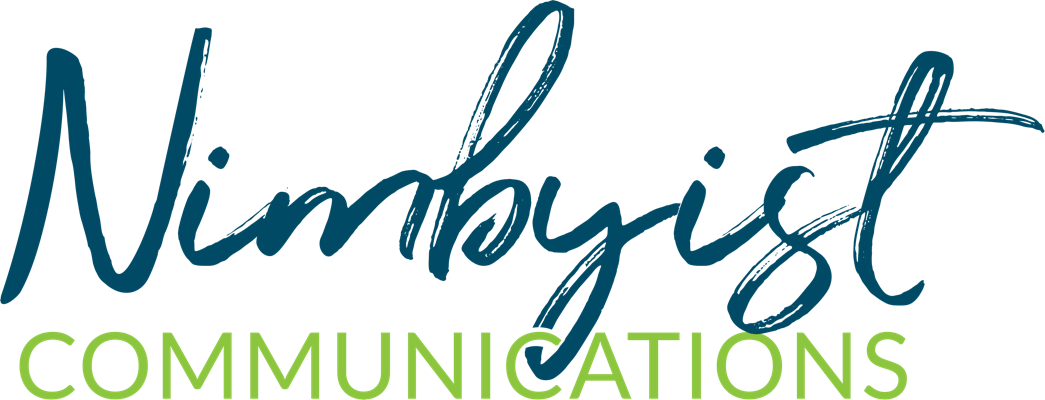The Dec. 16 #smNPchat looked at what makes a story newsworthy and how to improve your chances of getting attention. A well-written press release can make the difference between getting coverage and being overlooked; here are a few important pieces of advice.
 Positive attention for your organization that’s free – who doesn’t want that? If you want your chance at the spotlight, you need to stand out.
Positive attention for your organization that’s free – who doesn’t want that? If you want your chance at the spotlight, you need to stand out.
I once asked an organization why people should donate to them.
The response? “Because we do good work.” That is true – of your organization and every other nonprofit out there. You need more than goodness to earn media coverage: You need a relevant, newsy story.
How to write a press release
The reporter who hasn’t returned your call doesn’t have anything against you or your cause; they’re stretched just as thin as you are.
Try to make their job as easy as possible.
I approach every press release as if I’m writing the story on the reporter’s behalf: I try to anticipate the information they need, write in the same style, and include an expert quote or summarize an interesting story.
Your release should answer the Who, What, Where, When, Why and How about your topic. Once you’ve figured out your messages, here are a few concepts that will make life easier for you and the reporter: The three Cs and the inverted pyramid.
Introducing the three Cs
I had the three Cs drilled into me through journalism school: Keep your writing clear, concise and conversational. How does this translate into your press release?
- Use plain language and don’t be too creative. A reporter won’t use Google to figure out what you’re trying to say, so really work to keep the jargon out. If a 12-year-old wouldn’t understand what you’ve written, it is worth taking the time to try again. Also, particularly with your headline, don’t be too creative – if you’re writing about an event this weekend, say so.
- Get to the point. I recommend limiting your information to one page (approx. 500 words). If you need more than a page to cover your key points, focus on the main message – with a few strong supporting facts or quotes – and trim the rest.
Techie Tip: If you have background information, supplemental reports or statistics, post the information to your website and include a link with your news release.
- Be conversational – but not chatty. You should be able to read your release out loud easily; if your tongue trips over any spots, those sections need more work. However, conversational should be more Job Interview style than Drinks After Work On Friday. Don’t use slang or common expressions like “hey”, and unless included in a quote you shouldn’t need to use exclamation marks.
The inverted pyramid
When you read an article online or in a newspaper, chances are the headline grabbed your attention first. You read the first paragraph or two; it the topic is interesting you keep reading. If not, you move on. Your press release will face the same scrutiny.
Your release cannot follow the dramatic structure you learned in English class: If you try to build up to a climax you will lose attention and run out of space! What you need is the inverted pyramid.
I believe a newspaper editor I wrote for in high school told me that when he needed to shorten an article he started cutting from the bottom up.
Perhaps that’s true, or maybe he just wanted to get his point across: If the important information is anywhere but the top of an article, it may not make the final cut.
Every significant piece of information should be covered in the first two – brief – paragraphs. (The only exception is contact information, which I would list in your final paragraph.)
After your opening paragraphs, add your supporting information: for example, a quote from a client about the difference your program has made in his life, followed by a quote from your executive director about the goal of the program. Perhaps include a few carefully-selected statistics to highlight the scope of the problem or reflect the impact your work has had.
When you think you’ve finished your press release, check (and double-check) the opening paragraphs and make sure the important information is there – and if possible, get a someone else to review your release, too.
A few last tips
- Include appropriate contact information in the article. Properly formatted, a press release ends with “-30-” or “###” followed by the media contact’s information. These markers set a boundary that says “anything below this is not to be included”. Add any relevant contact information above the marker – the last paragraph of your release is a great spot.
- Don’t add editorial comments unless they’re in a quote. One of my early mentors criticized any release that started with “We are pleased to announce…” The fact that you’re sending a press release, she noted, makes this pretty obvious. Save the excitement for any quotes you include. For example, add a quote from your executive director that says “Without the incredible support of our community, this program would not exist.”
- Avoid exclamation marks. I mentioned this earlier, but sometimes exclamation marks get out of control. As with editorial comments, save the excitement for your quotes and eliminate any other exclamation marks that snuck in.



Trackbacks/Pingbacks